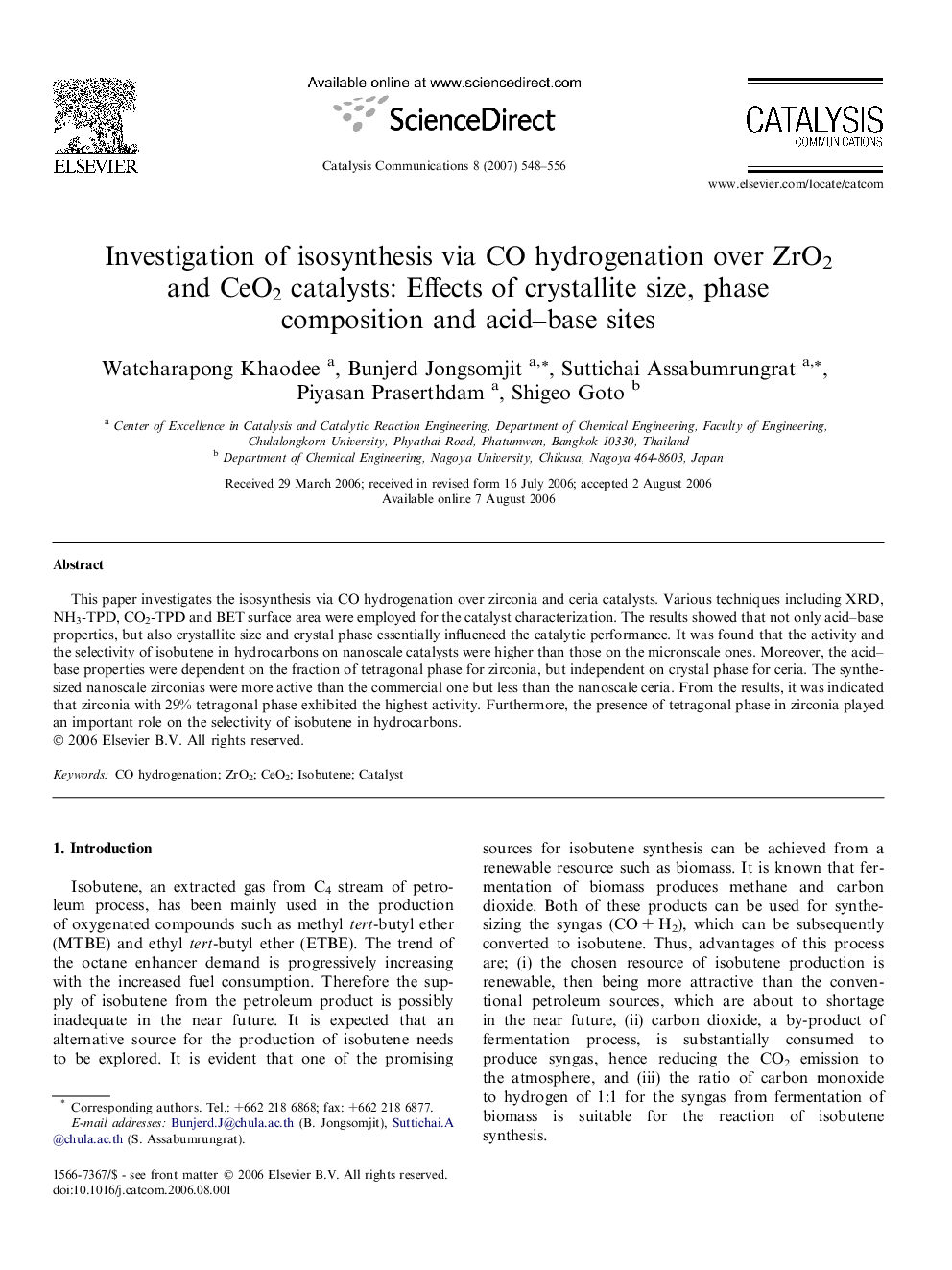| Article ID | Journal | Published Year | Pages | File Type |
|---|---|---|---|---|
| 52885 | Catalysis Communications | 2007 | 9 Pages |
This paper investigates the isosynthesis via CO hydrogenation over zirconia and ceria catalysts. Various techniques including XRD, NH3-TPD, CO2-TPD and BET surface area were employed for the catalyst characterization. The results showed that not only acid–base properties, but also crystallite size and crystal phase essentially influenced the catalytic performance. It was found that the activity and the selectivity of isobutene in hydrocarbons on nanoscale catalysts were higher than those on the micronscale ones. Moreover, the acid–base properties were dependent on the fraction of tetragonal phase for zirconia, but independent on crystal phase for ceria. The synthesized nanoscale zirconias were more active than the commercial one but less than the nanoscale ceria. From the results, it was indicated that zirconia with 29% tetragonal phase exhibited the highest activity. Furthermore, the presence of tetragonal phase in zirconia played an important role on the selectivity of isobutene in hydrocarbons.
